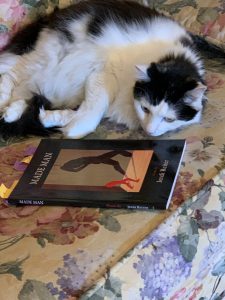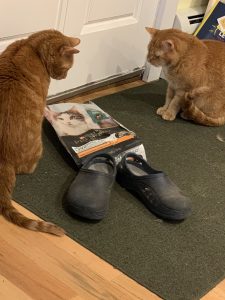In this season of Hanukkah, which, like many Jewish holidays, commemorates resistance to eradication by a more powerful empire, it’s difficult but necessary to recognize the paradox that one can be an oppressed minority in the wider world and simultaneously an oppressor in a local context. It’s agonizing to imagine the sexual violence and other atrocities Hamas committed against the Oct. 7 hostages. It equally pains me to read the Twitter reports about innocent Palestinian writers, journalists, and doctors who have recently died in Israel’s punitive bombing of Gaza. The current iteration of Zionism doesn’t make me feel safer as a person of Jewish background. The most hard-line government in my adult lifetime doesn’t seem to be keeping Israelis safe either.
I am dialoguing by email with readers who have different views from mine, and may share some of our conversations here in the future. Meanwhile, here are some readings that helped me this week.
A friend shared this poetic prayer with me, “Hanukkah 2023: We Light These Lights for Gaza,” by Rabbi Brant Rosen. The rabbi’s blog says he leads a Reconstructionist congregation in Chicago and is an activist for Israel/Palestine justice work. The last stanza especially moved me:
These lights we light tonight
will never be used for any other purpose
but to proclaim the miracle
of this truth:
it is not by might nor by cruelty
but by a love that burns relentlessly
that this broken world
will be redeemed.
Journalist Noah Berlatsky has helped me reconsider how we talk about “diaspora” as a temporary or less-than-ideal condition for world Jewry. He revisits this critique in his Dec. 7 Sojourners article “They Said Only Israel Could Keep Me Safe”.
There is no magic guarantee for safety. The Jewish diaspora has responded to this truth of insecurity by putting roots down in many places. We’ve done so with the recognition that no one place is perfect or safe, but with a faith that we can work to make wherever we are better, more welcoming, and freer for Jewish people — and ideally not just for Jewish people. The vision of diaspora is a vision not of Jewish control or Jewish dominance but of cosmopolitanism, of sharing, of allowing your neighbors to transform you as you transform them. Safety can reside not in controlling land and borders, but in an openness that sees belonging as portable and communal.
…That’s not to say that the diaspora is a utopia. But it is to say that in privileging Israel as the site of safety and hope, Jewish people forget that the diaspora is an important resource, a major influence on Jewish culture, and a critical aspect of Jewish history. Fascists like Hitler hated and tried to destroy the diaspora because it rejected purity and ethnonationalism in favor of heterogeneity and cosmopolitanism. For that and the other reasons I mention, we need to recognize the diaspora not as a weakness or failure, but as a hope, a refuge, and a site for antifascist defiance.
“A Dangerous Conflation” is an open letter in the arts and culture journal n+1, signed by hundreds of Jewish writers, artists, and activists “who wish to disavow the widespread narrative that any criticism of Israel is inherently antisemitic.” Notable signatories include Nan Goldin, Tony Kushner, Sarah Schulman, Judith Butler, poet Chase Berggrun, political historian Jeff Sharlet, and actress Hari Nef. The letter proclaims, “We find this rhetorical tactic antithetical to Jewish values, which teach us to repair the world, question authority, and champion the oppressed over the oppressor.”
Two stories that make me concerned about our foreign policy priorities: “US vetoes UN resolution backed by many nations demanding immediate humanitarian cease-fire in Gaza” (AP News, Dec. 9); “US skips congressional review to approve emergency sale of tank shells to Israel” (Reuters, Dec. 9).
According to that same AP story:
Israel’s military campaign has killed more than 17,400 people in Gaza — 70% of them women and children — and wounded more than 46,000, according to the Palestinian territory’s Health Ministry, which says many others are trapped under rubble. The ministry does not differentiate between civilian and combatant deaths…
…[U.N. Secretary-General Antonio] Guterres said Hamas’ brutality against Israelis on Oct. 7 “can never justify the collective punishment of the Palestinian people.”
“While indiscriminate rocket fire by Hamas into Israel, and the use of civilians as human shields, are in contravention of the laws of war, such conduct does not absolve Israel of its own violations,” he stressed.
The U.N. chief detailed the “humanitarian nightmare” Gaza is facing, citing intense, widespread and ongoing Israeli attacks from air, land and sea that reportedly have hit 339 education facilities, 26 hospitals, 56 health care facilities, 88 mosques and three churches.
Over 60% of Gaza’s housing has reportedly been destroyed or damaged, some 85% of the population has been forced from their homes, the health system is collapsing, and “nowhere in Gaza is safe,” Guterres said.
…Amnesty International’s Secretary General Agnès Callamard criticized the U.S. for continuing to transfer munitions to the Israeli government “that contribute to the decimation of entire families.”
And Louis Charbonneau, U.N. director at Human Rights Watch, said that by providing weapons and diplomatic cover to Israel “as it commits atrocities, including collectively punishing the Palestinian civilian population in Gaza, the U.S. risks complicity in war crimes.”
















